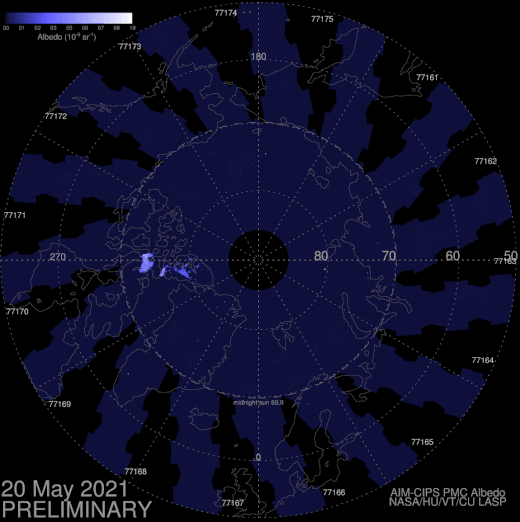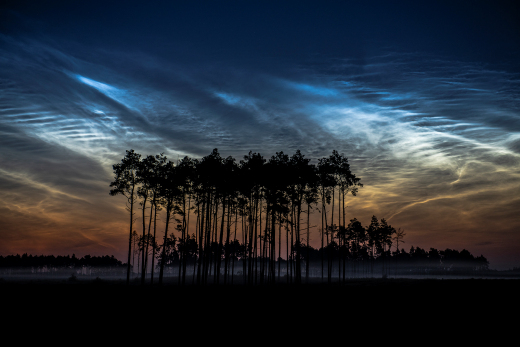July 21, 2021: Noctilucent cloud (NLC) season is now 8 weeks old. This animation from NASA’s AIM spacecraft shows everything that has happened since the first clouds appeared in late May:

The last frame says it all: Noctilucent clouds are still bright and abundant. In fact, at the highest latitudes they are setting records.
“We’re seeing more clouds at 80°N than in any other year since AIM was launched,” says Cora Randall of the University of Colorado’s Laboratory for Atmospheric and Space Research. “Cloud frequencies at 80°N are around 85%, whereas it’s more typical to see frequencies of about 75%.” (‘Frequencies’ are a measure of patchiness. 100% is complete coverage; 0% is no clouds at all.)
“This morning, I watched a fantastic display, the best of the year so far ,” reports Marek Nikodem, who photographed the clouds from Szubin, Poland (53°N) on July 21st:

“It’s not the end of the season yet,” he says. Indeed, it’s not.
NLCs are Earth’s highest clouds. They form when summertime wisps of water vapor rise up to the edge of space, about 83 km high, and crystalize around disintegrated meteoroids. When you see one, you’re literally seeing a cloud of frosted meteor smoke.
Earlier this summer, NLCs were seen in Europe as far south as the mediterranean coast of Spain (+37N). Given the current surge, another low-latitude excursion cannot be ruled out before the season ends in August. Watch for them!
Reblogged this on Tallbloke's Talkshop and commented:
NASA’s AIM Mission Overview says: ‘The primary goal of the mission is to determine why these night-shining clouds form. They are of special interest to scientists because the increased occurrence may be related to climate change.’ But it admits they’re ‘mysterious clouds’.
https://www.nasa.gov/mission_pages/aim/overview/index.html
LikeLike